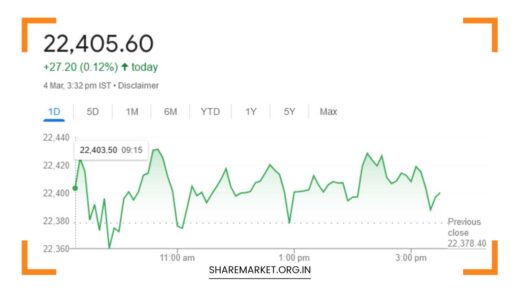Everyone Can Profit From These 9 Great Investment Options

Investment Options
Investment Options for Everyone: A Comprehensive Guide
Navigating the world of investments can seem daunting, whether you’re just starting or looking to refine your existing strategy.
This guide aims to demystify various investment avenues, catering to a range of investors—from novices seeking foundational knowledge to seasoned individuals looking for diversification strategies.
Our primary goal is to offer a clear overview of accessible investment options and underscore the importance of diversification in building a robust and resilient portfolio.
Investment Options
Share Market and Mutual Funds
Understanding Direct Equity
Direct equity involves investing in individual company stocks. This method offers the potential for high returns, but it also comes with increased risk. Stocks are influenced by market fluctuations, economic conditions, and company performance.
For investors who enjoy analyzing companies and market trends, direct equity can be an appealing option. However, it requires significant time and expertise to manage effectively.
For instance, consider a scenario where you invest in a tech startup that shows promising growth. If the company performs well, the stock value might increase significantly, leading to substantial gains.
Conversely, if the company fails to meet expectations or the tech industry faces a downturn, your investment could suffer losses. Therefore, direct equity requires careful research and monitoring.
Introduction to Mutual Funds
Mutual funds offer a different approach by pooling money from many investors to create a diversified portfolio managed by professional fund managers.
This option is suitable for those who prefer a more hands-off approach. Instead of picking individual stocks, investors buy shares of the mutual fund, and the fund manager handles the investment decisions.
Role of Mutual Fund Managers
Mutual fund managers are professionals who make decisions on behalf of investors regarding which assets to buy or sell. Their expertise helps in balancing risk and return according to the fund’s objectives.
They perform extensive research and analysis to optimize the fund’s performance, which can be particularly beneficial for investors who lack the time or expertise to manage their own portfolios.
Types of Mutual Funds
- Equity Mutual Funds: Invest primarily in stocks. They have the potential for high returns but come with higher risk. For example, a technology-focused equity fund might invest in several tech stocks, aiming for growth in the technology sector. The high return potential comes with the risk of volatility, especially in rapidly changing tech markets.
- Debt Mutual Funds: Invest in fixed-income securities such as bonds and government securities. They offer lower returns compared to equity funds but are generally less risky. An example would be a fund investing in government bonds, providing stable but modest returns with lower risk.
- Hybrid Funds: Combine equity and debt investments. They aim to balance risk and return by diversifying across asset classes. For instance, a balanced fund might invest 60% in equities and 40% in bonds, offering a middle ground between risk and return.
Choosing the Right Mutual Fund
When selecting a mutual fund, consider factors such as your investment goals, risk tolerance, and time horizon.
For instance, if you’re looking for long-term growth and can tolerate higher risk, an equity mutual fund might be suitable. Conversely, if you prefer stability and steady income, a debt fund could be a better fit.
FD, PPF, and RD
Fixed Deposits (FDs)
Fixed Deposits are a popular investment choice for those seeking guaranteed returns and safety. You deposit a lump sum amount for a fixed tenure at a predetermined interest rate. The principal amount is secure, and interest is compounded over the deposit period.
Benefits of Fixed Deposits
- Safety and Security: FDs are considered low-risk as they are typically insured up to a certain amount by financial institutions.
- Guaranteed Returns: Unlike market-linked investments, FDs offer guaranteed returns based on the interest rate fixed at the time of investment.
- Flexibility in Tenure: FDs come with various tenure options, ranging from a few months to several years, allowing you to align the investment period with your financial goals.
Public Provident Fund (PPF)
The Public Provident Fund is a long-term savings scheme with tax benefits. It offers a fixed interest rate and has a lock-in period of 15 years.
Contributions to PPF qualify for tax deductions under Section 80C of the Income Tax Act, and the interest earned is tax-free.
Features of PPF
- Tax Benefits: Contributions up to a certain limit qualify for tax deductions, and the interest earned and maturity proceeds are tax-free.
- Long-Term Savings: The 15-year lock-in period encourages disciplined saving and long-term financial planning.
- Loan Facility: You can take a loan against your PPF balance after 3 years of opening the account, which can be useful in emergencies.
Recurring Deposits (RDs)
Recurring Deposits require you to make regular monthly deposits for a fixed tenure. Like FDs, RDs offer guaranteed returns and are a good option for disciplined savers who want to accumulate a sum over time.
Benefits of Recurring Deposits
- Regular Savings: RDs help in systematic saving by making monthly contributions, which can be useful for meeting future financial goals.
- Predictable Returns: The interest rate is fixed at the time of investment, ensuring predictable returns.
- Flexible Tenure: RDs offer flexible tenures ranging from 6 months to 10 years, allowing you to choose based on your savings goal.
Comparison of FD, PPF, and RD
| Investment Option | Interest Rate | Tax Benefits | Lock-in Period | Suitability |
|---|---|---|---|---|
| Fixed Deposit | Moderate | Interest taxable | Varies | Short to medium-term savings |
| Public Provident Fund (PPF) | Moderate to high | Tax deduction and tax-free interest | 15 years | Long-term retirement savings |
| Recurring Deposit | Moderate | Interest taxable | Varies | Systematic savings |
Gold ETF, NPS, SCSS, and Bonds
Gold ETFs
Gold ETFs invest in gold and are traded on stock exchanges like individual stocks. They are designed to reflect the price of gold, providing a way to invest in the precious metal without physically buying gold.
Advantages of Gold ETFs
- Hedge Against Inflation: Gold often retains its value during economic downturns, making it a popular choice to hedge against inflation.
- Liquidity: Gold ETFs can be bought and sold easily on stock exchanges, providing liquidity.
- No Storage Concerns: Unlike physical gold, there are no storage or insurance concerns with Gold ETFs.
National Pension System (NPS)
The National Pension System is a government-sponsored pension scheme aimed at providing retirement benefits. It offers tax advantages and allows for a mix of equity, corporate bonds, and government securities.
Benefits of NPS
- Tax Benefits: Contributions to NPS qualify for tax deductions under Section 80CCD(1B) of the Income Tax Act, in addition to the benefits under Section 80C.
- Diversified Investment: NPS provides a mix of equity and fixed-income investments, which helps in achieving a balanced growth of the retirement corpus.
- Flexible Contribution: You can contribute to NPS regularly or in lumpsum, providing flexibility in savings.
Senior Citizens Savings Scheme (SCSS)
The Senior Citizens Savings Scheme is designed for individuals aged 60 and above, offering a higher interest rate compared to standard savings accounts and FDs. It provides regular income and is backed by the government.
Features of SCSS
- High Interest Rates: SCSS offers competitive interest rates, typically higher than FDs or savings accounts.
- Quarterly Interest Payments: Interest is paid quarterly, providing a regular income stream.
- Tax Benefits: Contributions up to a certain limit qualify for tax deductions under Section 80C.
Bonds
Bonds are debt instruments issued by governments or corporations to raise capital. They offer regular interest payments and return the principal amount at maturity. Bonds can be classified into government bonds and corporate bonds.
Government Bonds
- Safety: Government bonds are considered low-risk as they are backed by the government.
- Stable Returns: They offer stable returns, making them suitable for conservative investors.
Corporate Bonds
- Higher Yields: Corporate bonds generally offer higher yields compared to government bonds but come with higher risk.
- Credit Risk: The risk associated with corporate bonds depends on the issuing company’s creditworthiness.
Risk and Return
Comparing Risk and Return Profiles
| Investment Option | Risk Profile | Return Profile |
|---|---|---|
| Direct Equity | High | High |
| Mutual Funds | Varies (depends on fund type) | Varies (depends on fund type) |
| FD | Low | Low to moderate |
| PPF | Low | Moderate |
| RD | Low | Moderate |
| Gold ETF | Moderate to high | Variable |
| NPS | Moderate | Moderate to high |
| SCSS | Low | Moderate |
| Bonds | Low to moderate | Moderate to high |
Understanding Risk Tolerance
Risk tolerance is a critical factor in investment decisions. It refers to an individual’s ability and willingness to endure fluctuations in the value of investments.
Factors influencing risk tolerance include financial goals, time horizon, and personal comfort with market volatility.
Assessing Your Financial Goals
Before choosing investments, evaluate your financial goals, whether they are short-term, medium-term, or long-term.
For instance, if you’re saving for a down payment on a house in the next five years, a mix of low-risk and moderate-risk investments might be appropriate.
Conversely, if you’re planning for retirement 30 years from now, you may afford to take higher risks for potentially higher returns.
Diversification
The Importance of Diversification
Diversification is a strategy that involves spreading investments across various asset classes to minimize risk. By diversifying, you reduce the impact of poor performance in any single investment on your overall portfolio.
Asset Allocation Strategies
- Young Investors: Typically have a higher risk tolerance and a longer investment horizon. A greater allocation to equities can capitalize on growth opportunities.
- Middle-Aged Investors: May start shifting towards a balanced approach, incorporating a mix of equities and fixed-income securities to manage risk while still seeking growth.
- Near-Retirement or Retired Investors: Often prefer safer investments like bonds, FDs, and PPF to preserve capital and ensure steady income.
Example Asset Allocation
- Aggressive Portfolio: 70% Equities, 20% Bonds, 10% Gold ETFs
- Balanced Portfolio: 50% Equities, 30% Bonds, 10% Gold ETFs, 10% PPF/FD
- Conservative Portfolio: 30% Equities, 50% Bonds, 10% Gold ETFs, 10% FD/PPF
Additional Considerations
Exploring Other Investment Options
- Real Estate: Investing in property can offer rental income and potential appreciation but requires significant capital and comes with its own set of risks and responsibilities.
- Cryptocurrencies: Digital currencies like Bitcoin and Ethereum have gained popularity for their high return potential but are highly volatile and speculative.
- Peer-to-Peer Lending: This involves lending money directly to individuals or businesses through online platforms. It can offer attractive returns but also comes with the risk of borrower default.
Importance of Financial Planning
Effective financial planning involves setting clear financial goals, creating a budget, and regularly reviewing and adjusting your investment strategy.
Consulting with a financial advisor can provide personalized advice based on your unique circumstances and help you navigate complex investment decisions.
Choosing a Financial Advisor
When selecting a financial advisor, consider their qualifications, experience, and fee structure. A good advisor will work with you to develop a comprehensive financial plan and offer advice tailored to your specific needs and goals.
Call to Action
Start Investing Early
The earlier you start investing, the more you can benefit from compound growth. Begin by setting clear financial goals and exploring different investment options that align with your risk tolerance and time horizon.
Resources for Further Learning
To enhance your investment knowledge, consider exploring resources such as:
- Books: “The Intelligent Investor” by Benjamin Graham, “A Random Walk Down Wall Street” by Burton Malkiel.
- Websites: Investopedia, Morningstar, Yahoo Finance.
- Financial Advisors: Certified Financial Planners (CFP) or Chartered Financial Analysts (CFA) for personalized advice.
By understanding the diverse investment options available and the importance of diversification, you can make informed decisions that align with your financial goals and risk tolerance.
Whether you’re a beginner or an experienced investor, leveraging this knowledge will help you build a well-rounded and resilient investment portfolio.

















